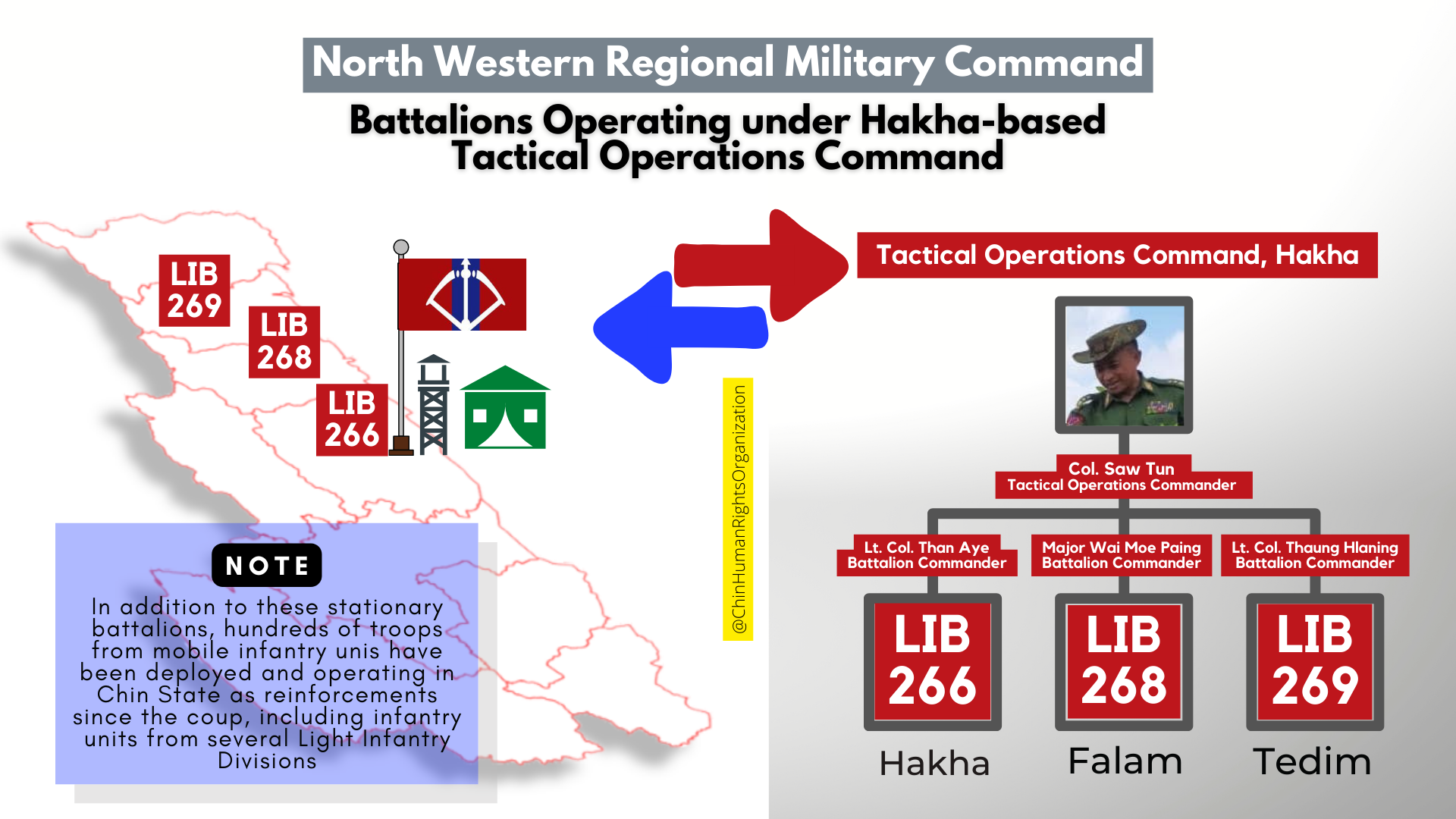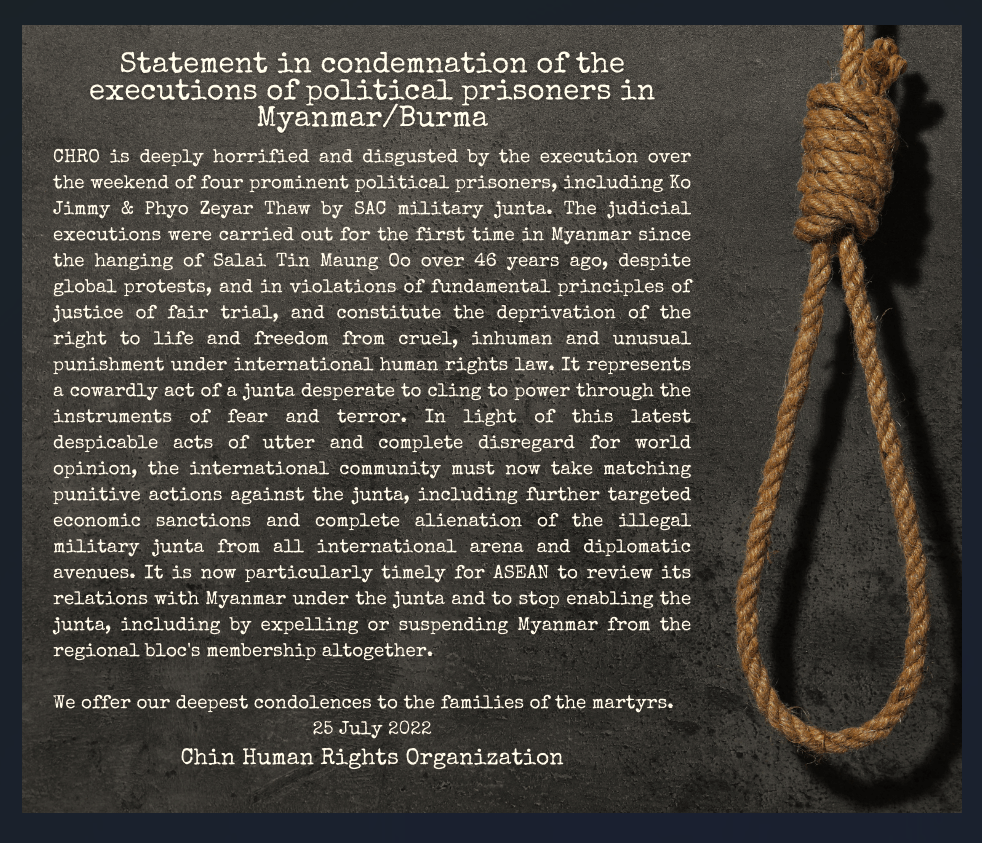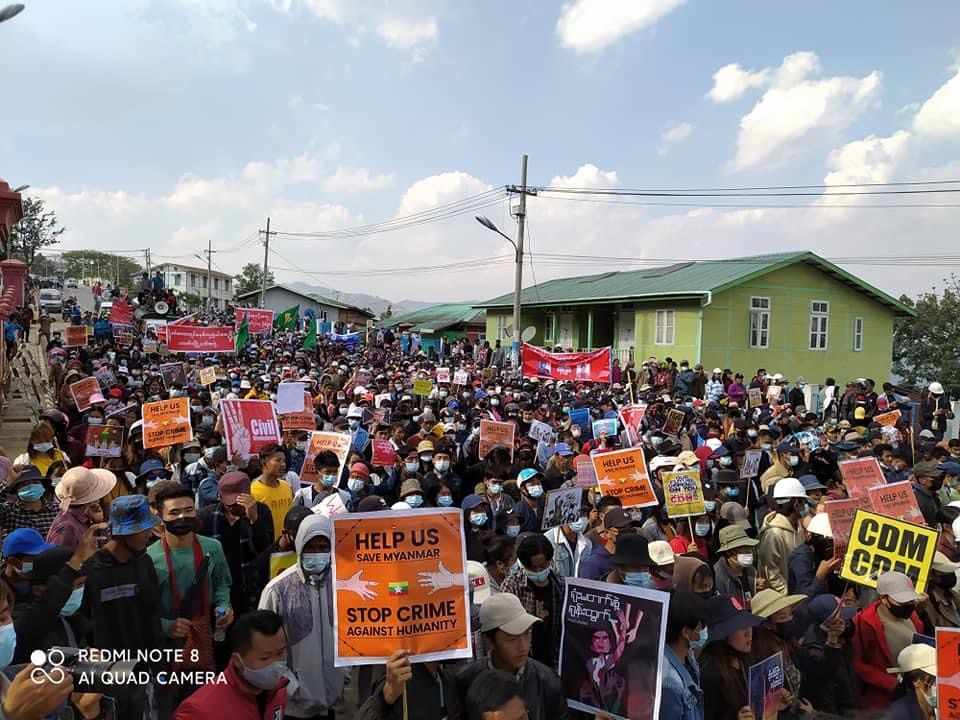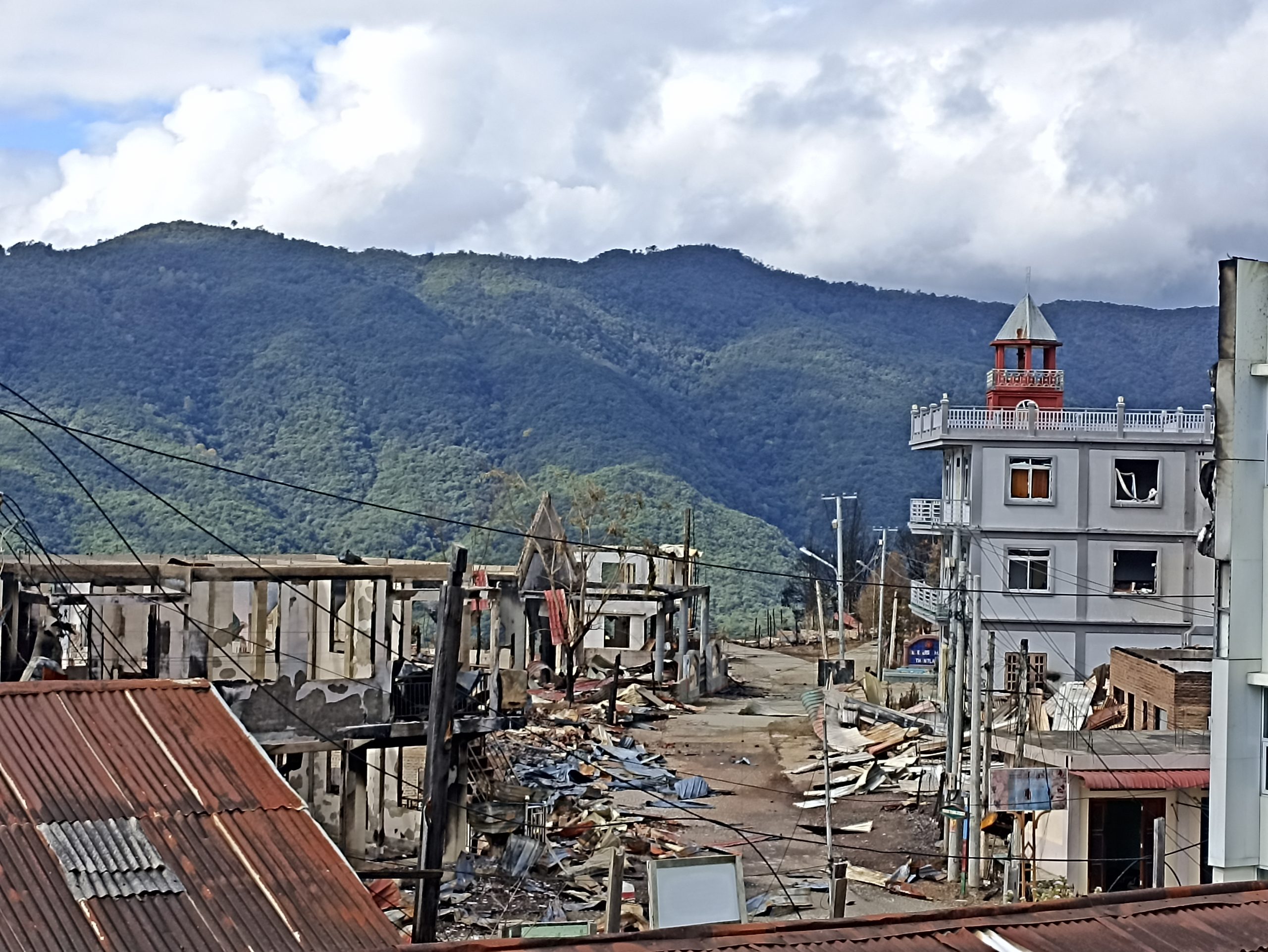
Two children remain missing a day after being taken hostage by junta soldiers
August 15, 2022 The status or whereabouts of two children who were abducted by junta soldiers from LIB 268 on Sunday August 14, 2022 following the raid and pillaging of New Haimual Village, Tedim Township remain unknown.

The Dangerous Mission to Sneak Sacks of Cash in Western Aid Into Myanmar
The Wall Street Journal| While the U.S. Agency for International Development and United Nations agencies continue to operate inside Myanmar, their reach is limited because the junta controls where they can go and to a large degree what they can do. Getting permission to move around involved complex processes even before the coup, but representatives of three aid organizations...

One Civilian Dead, Two injured in Army Shooting
A 22 year-old woman is dead and two others received bullet wounds, including her husband, when junta troops from LIB 266 operating under Tactical Operations Command in Hakha, opened fire on a traveling vehicle four miles outside of Hakha this morning.

U.S. Eyes New Energy Sanctions on Myanmar After Execution of Activists
Foreign Policy| “That’s a lifeline,” Salai Za Uk Ling, the deputy executive director at Chin Human Rights Organization, a nonprofit group advocating for the rights of ethnic Chin and other minority groups in Myanmar, said of MOGE’s significance to the junta’s armed campaign.

India raises ‘deep concern’ over execution of four pro-democracy activists in Myanmar
The Hindu| "These executions, the first in Myanmar in over 30 years, and the absence of fair trials show the junta's contempt for the unwavering democratic aspirations of the people of Myanmar," it said in a statement.

Hardships for the embattled Chin minority in Myanmar’s poorest state
Mizzima| Violence has ratcheted up in Chin State. Some notable atrocities have included the junta army's attack on Mindat Town in May 2021. They used captured youths as human shields and, according to the Chin Human Rights Organization (CHRO) may have committed war crimes and “grave breaches of the Geneva Convention” in the town.

Myanmar activists vow to fight back following executions
DW: "More people will now organize themselves. The resistance will grow, and if the junta thought this was going to instil fear, it is terribly mistaken. Their misadventure will prove costly," Salai Za Uk Ling of the Chin Human Rights Organization told DW.

The Guardian: ‘We are not afraid’: anti-junta groups rail against Myanmar executions
The people of Myanmar are already well aware of the junta’s brutality, said Salai Za Uk Ling, deputy executive director of the Chin Human Rights Organization, which has documented atrocities, including the burning of homes and massacre of civilians, since the coup. Yet the brazenness of the executions was shocking, he added. “In such a public display of brutality,...

Burned churches: Myanmar’s junta accused of abuses against the Christian minority
The Observers (France24): Salai Za Uk Ling is Deputy Executive Director the Chin State Human Rights Organisation (CHRO). He is a Baptist Christian and along with his team, Salai Za Uk Ling documents abuses committed by the country’s army. They have counted more than 50 church attacks since February 2021 in Chin State, which range from aerial bombardments to ransacking by ground troops

